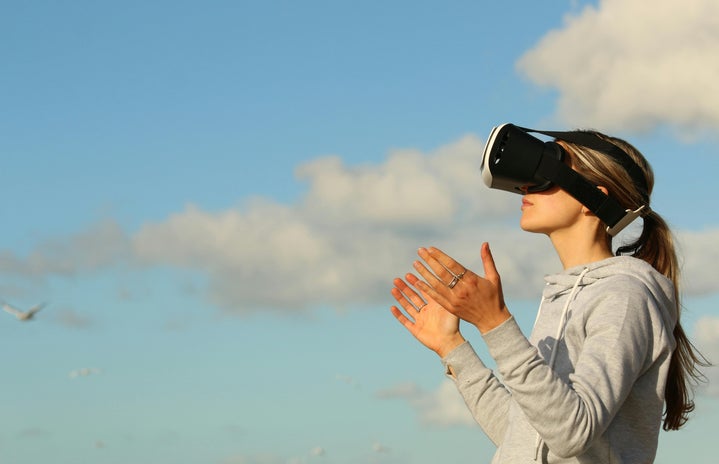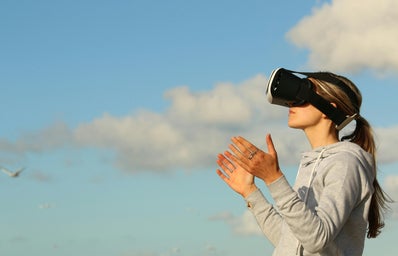Advances in the technology sector in recent years have increasingly promoted a change in the way humans relate to equipment. Launches such as the Apple Vision Pro and the Unitree Go2 Robot Dog highlight new movements in the market. Thus, according to the Future Today Institute’s technological trends report, launched by futurist Amy Webb during the SXSW 2024 event, the sector’s bets for the coming years include artificial intelligence, virtual reality and robots. In the last decade, according to a survey by Stanford University, between 2013 and 2022 companies invested around 1 trillion in artificial intelligence.
For Márcio Sarroglia Pinho, professor and dean of the PUCRS Polytechnic School, automation has now reached the creation process. Previously, technologies such as cell phones and computers served to reduce creation time; currently, “you just need to express the idea with a few sentences, in a process called Prompt Engineering, and tools based on generative AI create the artifact we want from scratch.”, says the professional.
The latest report from the Future Today Institute states that AI has transformative potential, influencing entire economies and changing society. These new processes, present in tools like ChatGPT, are likely to become a routine in everyone’s daily lives in the upcoming years.
AI and Augmented Reality
Futurist Amy Webb foresees a new era after the so-called LLM (Large Language Models), which she calls Large Action Models. These models represent devices that will allow artificial intelligence to recognize and learn from our actions.
Apple Vision Pro is a tangible example of this emerging reality. The device has been on sale in the United States since February for around US$3,499. The North American technology brand promises to transform the way people work, collaborate, connect, relive memories and enjoy entertainment. The device’s interface is similar to iOS and allows users to control the screens with eye and hand gestures, in addition to Siri.
Although Apple defends the creation of Spatial Computing and Meta uses the term Metaverse, Márcio Pinho highlights that virtual reality helmets have been developed for more than 30 years. “What happens today is that these companies are focusing on a broader market that was previously restricted to large corporations, universities and research centers”, says the professor.
Experts at the SXSW event highlight the efficient integration of the device with the companies’ ecosystem as one of the main potentials of these devices. Futurist Andres Bustamante says that “wearables” serve as a personal assistant in everyday life. “In the same vein, we will see more and more devices for health and well-being, in particular “neuro wearables” that measure brain waves for use with applications that help reduce stress, anxiety, symptoms of depression and improve concentration”, adds the specialist.
What about Robotic Pets?
What once seemed like a possibility only in cartoons or science fiction films is now close to reality. In February of this year, DJ Alok went viral on social media when he showed off the “new member” of his family, the robot dog from the Chinese company Unitree Robotics. The model shown was the Unitree Go2, which starts at $1,600.
Although it may seem strange to many, robots are one of the technology trends for the coming years. In addition to dogs, the machine can appear in different formats, including humanoids, which can already perform different functions.
SXSW 2024 experts argue that these machines should be seen as allies, as they can perform day-to-day mechanical work, in addition to caring for the population, which is becoming increasingly elderly. “Imagine you coming home, and you want someone to help you cook or, sometimes, you need to go to sleep, and you have to carry a bunch of devices: laptop, iPad, cell phones, headphones, some of which belong to your wife, others from your son…. and if you have to spend half an hour just putting things to load, wouldn’t you like to have a robot looking around the house and looking at things, organizing them?”, asks Luis Sentis, professor at the University of Texas, during a workshop at the event.
What’s the future of technology?
Although these technologies are still in the development phase, the negative points can already be observed. Rony Abovitz, founder of Magic Leap and Sun and Thunder, raised the disconnect with the “real” world, where people start to look at the world through a filter, “this part of feeling disconnected from reality is like breaking a of the principles of augmented reality”, he emphasized at the SXSW event.
Professor Márcio Sarroglia Pinho says that “In the same way that already occurs today with mobile phones, which tend to isolate the user from people physically close to them and bring them closer to distant people, helmets can further accentuate this paradox, because the user stops seeing the real world around them, which can increase their focus on an activity, but also increases isolation.”
Another factor to be considered for the future is the exclusion of the less favored part of the population, since “as the cost of these new equipment is high and there is a need for greater technological knowledge to use them, new contingents of excluded people can be created” , says Márcio Sarroglia Pinho.
The article above was edited by Larissa Buzon.
Like this type of content? Check out Her Campus Casper Libero for more.


